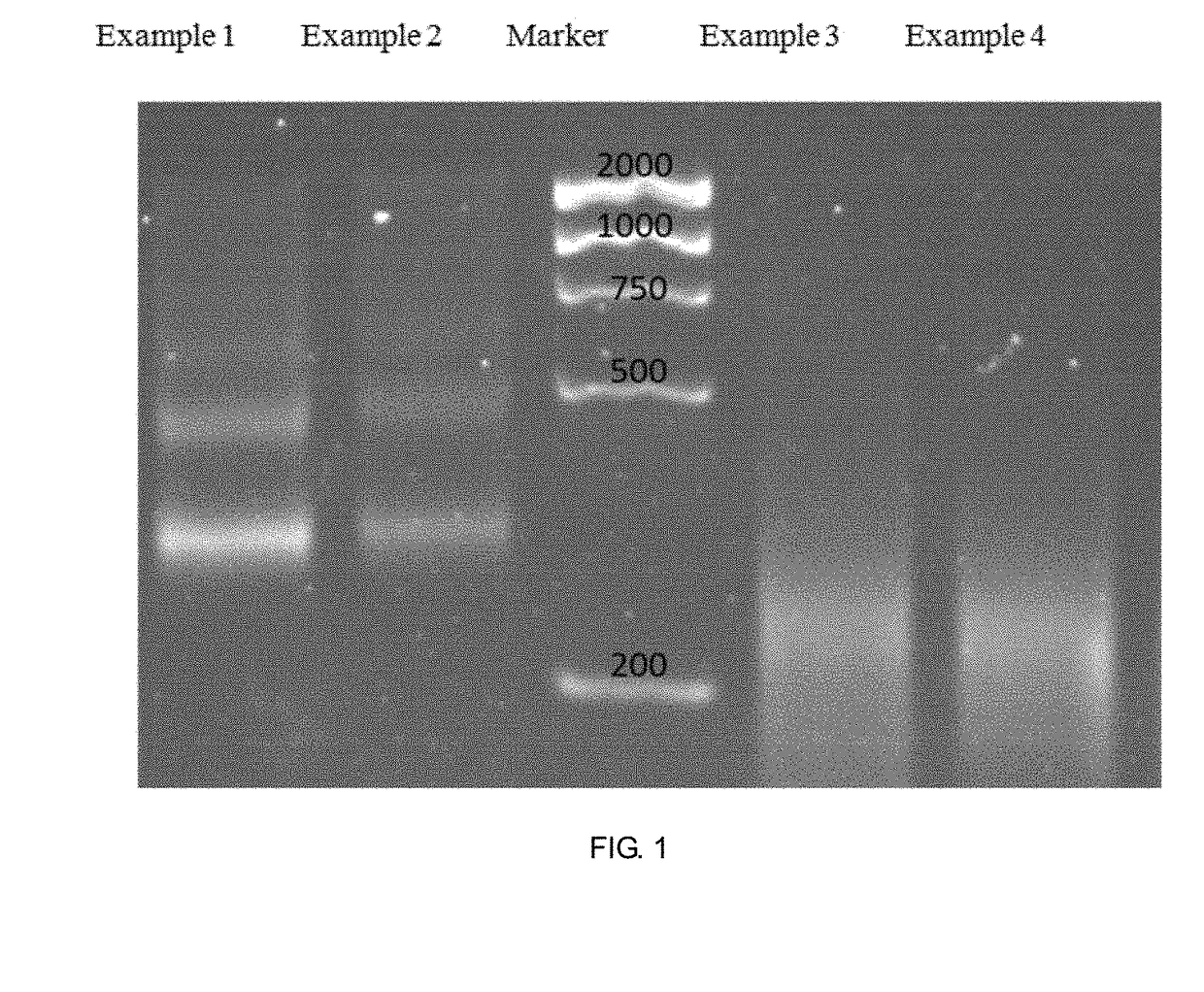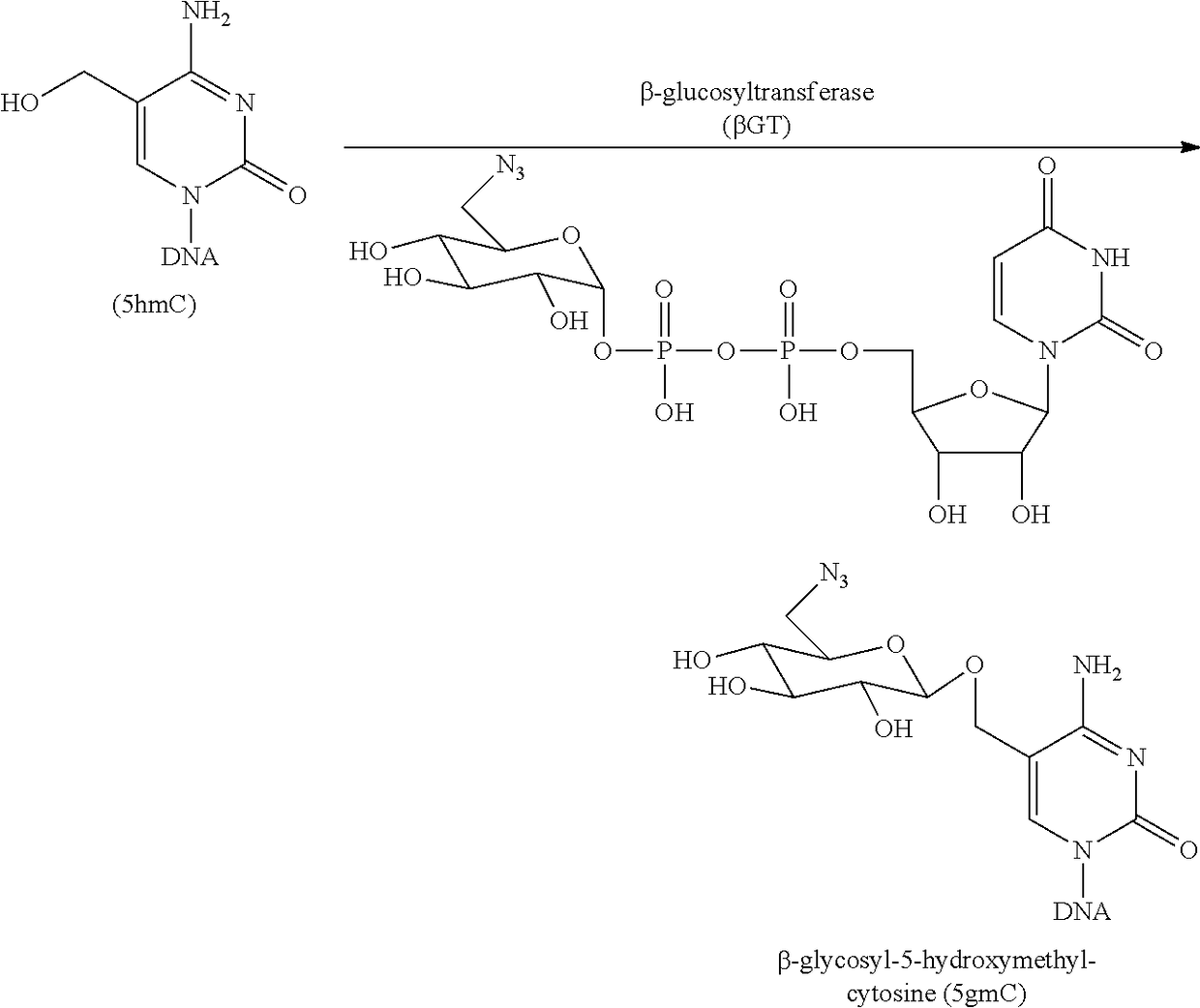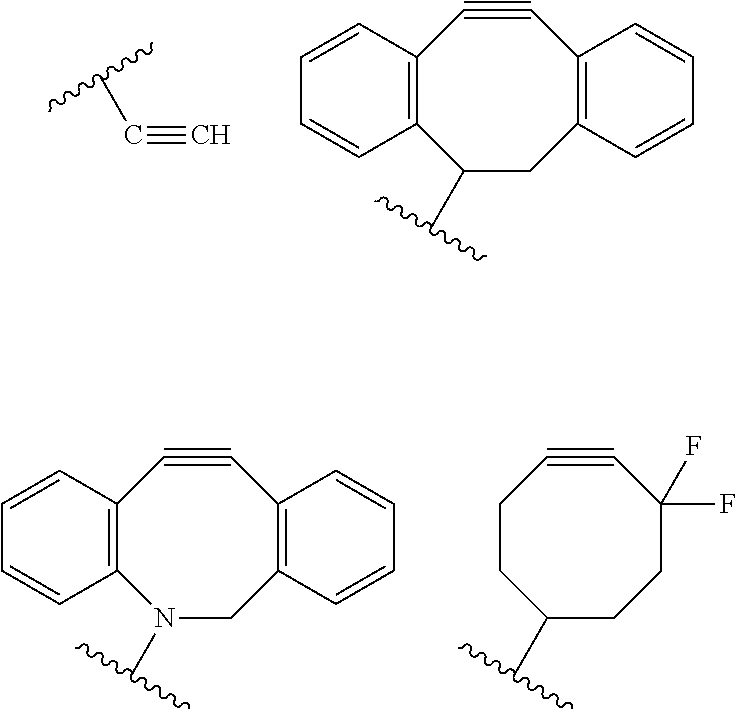Method for genomic profiling of DNA 5-methylcytosine and 5-hydroxymethylcytosine
a technology of dna methylcytosine and genomic profiling, applied in the field of dna sequencing, can solve the problems of high sequence requirements, poor binding properties of sequences with sparsely distributed modifications, and high cost of antibody, and achieve the effect of improving the sequencing efficiency of cytosines
- Summary
- Abstract
- Description
- Claims
- Application Information
AI Technical Summary
Benefits of technology
Problems solved by technology
Method used
Image
Examples
example 1
Construction of 5-methylcytosine Sequencing Library from Plasma, Cell-Free DNA
[0048](1)DNA purification and fragmentation pretreatment:
[0049]4 mL human blood is taken with EDTA anticoagulant tube, and stored at 4 degrees Celsius. Within 6 hours, it is centrifuged for 10 min with a speed of 2000 g; then centrifuged for 10 min with a speed of 13000 g. Plasma is obtained and cell-free DNA is extracted.
[0050](2) The trace amount of DNA is repaired and ligated with the adaptor, and the,adaptor having a sequence as follows:
5′-p-GATCGGAAGAGCACACGTCTGAACTCCAGTCACAAACATCGATCTCGTATGCCGTCTTCTGCTTG-3′;5′-AATGATACGGCGACCACCGAGATCTACACATGCCTAAACACTCTTTCCCTACACGACGCTCTTCCGATC*T-3′,* represents thio.
[0051]0.5-10 ng of cell-free DNA is repaired and ligated with the sequencing adaptor required for secondary sequencing. DNA fragment repair refers to repairing base damage in DNA fragments and making up 5′ and 3′ of DNA to a blunt-end. The steps are as follows:
[0052]1. 50 uL DNA is subjected to the End ...
example 2
Construction of Hydroxymethylcytosine Sequencing Library from Plasma Cell-Free DNA
[0072](1) DNA purification and fragmentation pretreatment:
[0073]4 mL human blood is taken with EDTA anticoagulant tube, and stored at 4 degrees Celsius. In 6 hours, it is centrifuged for 10 min with a speed of 2000 g, and then centrifuged for 10 min with a speed of 13000 g. Plasma is obtained and cell-free DNA is extracted.
[0074](2) Repairing of trace amount of DNA and ligation of adaptor:
[0075]0.5-10 ng of free DNA is repaired and ligated with the sequencing adaptors required for secondary sequencing. DNA fragment repair refers to repairing base damage in DNA fragments and making up 5′ and 3′ of DNA into a blunt end. Steps are as follows:
[0076]1. 50 uL DNA is added to End Repair & A-Tailing reaction in PCR tube according to the specification of Kapa Hyper Perp Kit.
ReactantsVolume (uL)Free DNA50End Repair & A-Tailing Buffer7End Repair & A-Tailing Enzyme mix3
[0077]2. Reaction is heated by the following ...
example 3
Construction of 5-methylcytosine Sequencing Library is Obtained from Tissue DNA
[0092](1) Extraction and fragmentation pretreatment of DNA
[0093]Tissue genome DNA is extracted with ZR Genomic DNA-Tiss Kits (Zymo). 0.5-100 ng genome DNA is subjected to the reaction according to Kapa HyperPlus Library Preparation Kit so as to break up the genome DNA.
ReactantsVolume (uL)Genome DNA35Kapa Frag Buffer (10X)5Kapa Frag Enzyme10
[0094](2) Repairing of trace amount of DNA and ligation of adaptor:
[0095]The fragmented DNA is repaired and ligated with the adaptors required for the second-order sequencing. DNA fragment repair refers to repairing base damage in DNA fragments and filling 5′ and 3′ of DNA into fiat ends. Steps are as follows:
[0096]1. 50 uL DNA is subjected to the End Repair & A-Tailing reaction in the PCR tube according to the Kapa HyperPlus Library Preparation Kit specification.
ReactantsVolume (uL)Fragmented DNA50End Repair & A-Tailing Buffer7End Repair & A-Tailing Enzyme mix3
[0097]2....
PUM
| Property | Measurement | Unit |
|---|---|---|
| Length | aaaaa | aaaaa |
| Nanoscale particle size | aaaaa | aaaaa |
| Volume | aaaaa | aaaaa |
Abstract
Description
Claims
Application Information
 Login to View More
Login to View More - R&D
- Intellectual Property
- Life Sciences
- Materials
- Tech Scout
- Unparalleled Data Quality
- Higher Quality Content
- 60% Fewer Hallucinations
Browse by: Latest US Patents, China's latest patents, Technical Efficacy Thesaurus, Application Domain, Technology Topic, Popular Technical Reports.
© 2025 PatSnap. All rights reserved.Legal|Privacy policy|Modern Slavery Act Transparency Statement|Sitemap|About US| Contact US: help@patsnap.com



